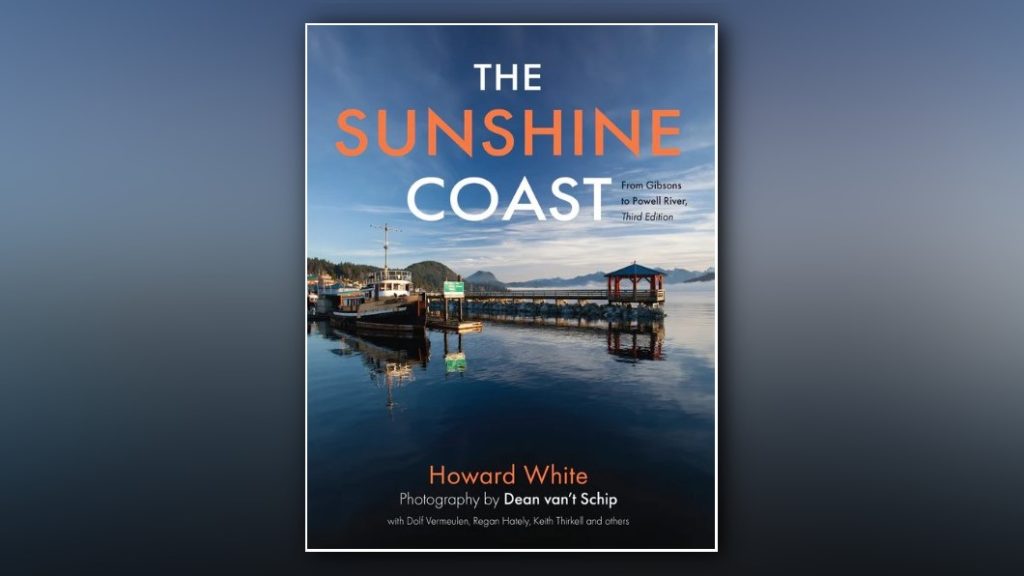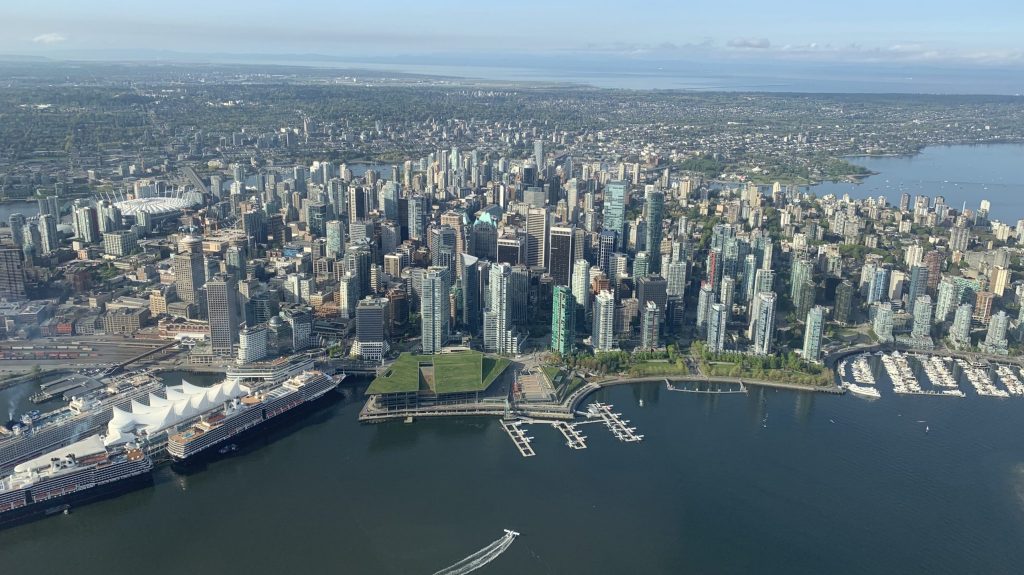Not just another pretty face: a new book explores the hidden history of B.C.’s Sunshine Coast

Posted July 14, 2024 2:34 pm.
Last Updated July 21, 2024 3:29 pm.
It’s not an island, but you have to take a ferry to get there. B.C.’s Sunshine Coast — a 160-kilometre stretch of waterfront from Howe Sound to Desolation Sound — is renowned for its laid-back lifestyle and spectacular views. But the author of a new book says there is much more to the region than meets the eye.
“Yes, it is a beautiful countryside, but it’s more than just a pretty face. It has a great deal of extremely interesting history that’s fun to read about,” said Howard White, author of The Sunshine Coast: From Gibsons to Powell River, Third Edition.
White knows whereof he speaks. A lifelong Sunshine Coaster, he is also the co-founder of Harbour Publishing and still lives and works in Pender Harbour. The book sees him dig into the hidden history of the region, including how it got its name, all with his award-winning wit.
“I have a lot of fun poking fun at that. When we started a historical journal describing the nature of the Sunshine Coast, we called it Raincoast because we are actually in a rainforest here, and it’s raining much of the year,” he said.
“So, the Sunshine Coast is a bit of a misnomer, which was thought up predictably as a promotional title by one of the area’s non-stop promoters, a man named Harry Roberts, who was one of the founders of Roberts Creek.”
John Ackermann speaks with Howard White, author of The Sunshine Coast
The Sunshine Coast has a way of being far away and close at the same time — far away in the sense that you can only get there by boat or seaplane, but still as close as a 40-minute ferry ride from West Vancouver. White says locals take pride in their isolation from the rest of the Lower Mainland, part of what he calls their “salty sense of self-possession.”
“That does allow us to sort of keep off to ourselves here and chart our own path in B.C. politics and history,” he said. Indeed, as White points out in the book, the region has voted against the government of the day 11 times in the past 16 provincial elections.
That contrarian streak is likely a big reason why the area is still inaccessible by road — or as White put it in the book, “a contrariness that has rewarded the area with some of the twistiest sections of Highway 101 north of Guatemala.”
“But there are other good reasons why the road has never been built,” he said. “You’d have to blast through a mountain between Gibsons and Squamish, and no government has ever wanted to spend the money that would take.”
This is the third edition of the book. White says what has changed since the last edition in 2011 is the rise of inexpensive drone photography.
“We got terrific photos of overheads of all communities that we never could afford to get before because you had to hire an airplane,” he said.
“The look of the place has changed quite considerably. So, any photos we had of the settlements — Gibsons, Sechelt, Pender Harbour, Powell River — they all had to be redone because people would look at them and say, ‘Well, that’s an old photograph.’ So, we’ve refreshed the visual side of the book entirely and got some fabulous new photos.”
Another change since the last edition is the land rush brought on by the COVID-19 pandemic as many transplanted South Coasters realized they could work from home from anywhere.
White sees the spike in population as a positive.
“As the resource industries declined, the average population age of the Sunshine Coast got older and older until we were one of the oldest regional populations in the country,” he said. “People were starting to wonder, ‘Who’s going to do the work around here? Who’s going to cut the grass?’ We’re all getting too old.”
“You need a working tax base to pay for services and have a vital community,” he said. “Our schools were closing, many of them closed, and a lot of the others were declining in enrollment. So, we’re actually happy to see young families coming back into the area and revitalizing it.”
Of course, no book about the Sunshine Coast would be complete without mentioning Gibsons, and its main claim to fame as home to the long-running TV series The Beachcombers. Nearly 30 years after the show went off the air, the iconic “Molly’s Reach” storefront remains a draw for visitors.
“It went through various lives as a general store and a hardware store. And so, some entrepreneurs took it over a few years ago and made a very popular restaurant there,” said White.
“Unfortunately, right now, it’s not active, but it’s still standing there as a reminder of the glory days of The Beachcombers.”
“The Persephone was on display in the town here. It’s been moved because there’s … building going on, but some keeners are restoring it, and they mean to [make it] back into a prominent place in one of the local parks eventually.”
Related:
” Forty years later: The Beachcombers premiered Oct. 1, 1972
The Sunshine Coast is a richly illustrated celebration of one of B.C.’s coastal getaways that can serve as both an introduction for those who have never been there or as a souvenir for those who already have.
The Sunshine Coast: From Gibsons to Powell River, Third Edition, is available from Harbour Publishing.








